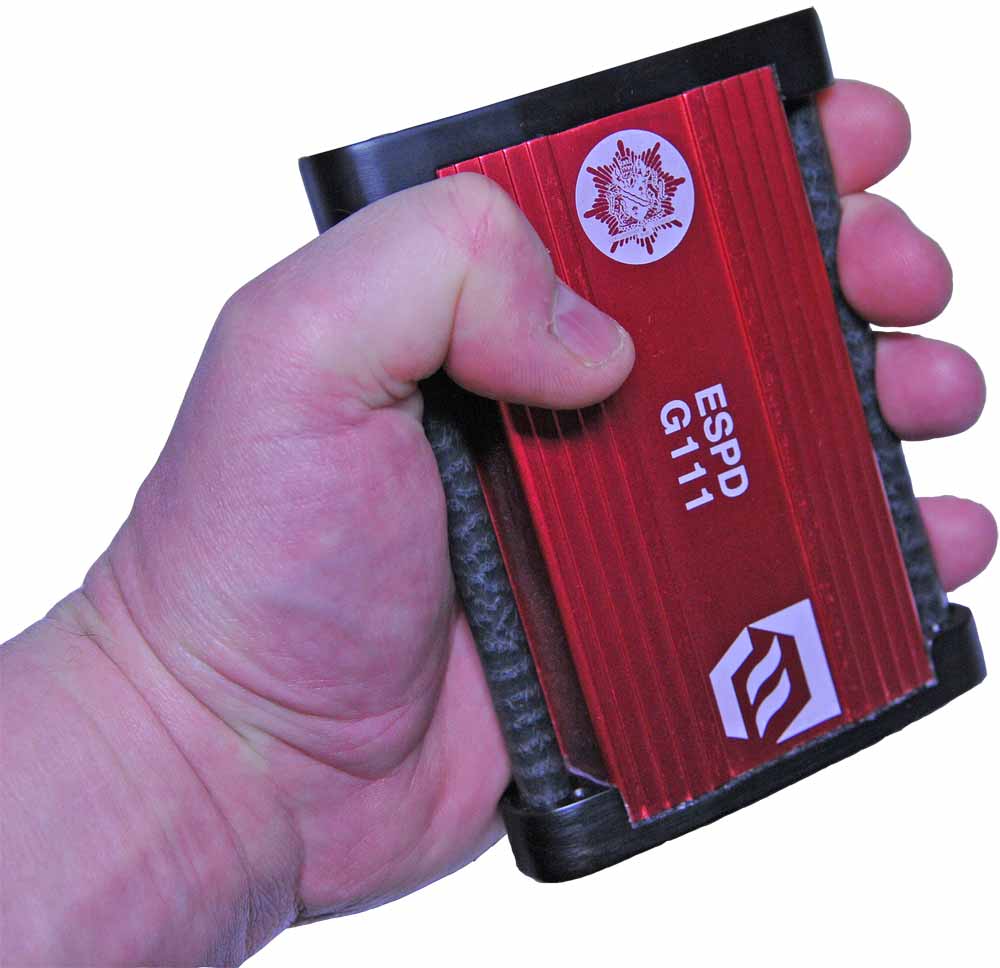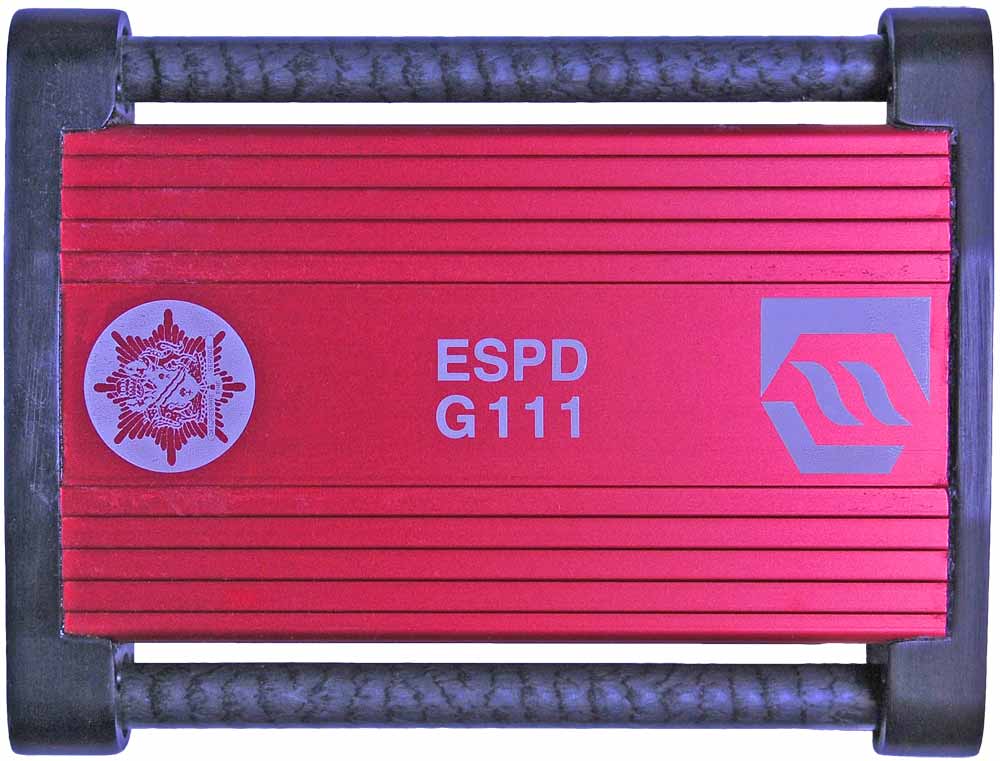Personal Dosimeter for Oxfordshire fire brigade serving AEA Harwell

Overview of operation
The unit was designed to be stored ready for immediate use in a rugged cradle. Withdrawing it from the cradle would immediately activate it without further user intervention. Once activated the unit would record accumulated dose and dose rate levels, communicating these and its unique ID back to the cradle on its return. Once data transfer was complete the unit would enter sleep mode again. The side bars enabled audible alarms to be silenced and other basic functions to be accessed.Design process
The ruggedised requirement began to polarise the enclosure design very early on in the design process. Experience in other areas enabled multiple technologies to be brought together to produce an effective robust instrument. Minimising the case holes was a priority and this gave the rest of the design path a tight focus.Innovative features

Alarm sounder - The piezo transducer and its driver were designed to give a very piercing sound easily heard through a thick jacket. This was achieved through a driving circuit which could self tune to the optimum characteristic of the sounder and also, to some extent, acoustic matching.
Bi-directional optical communications through a single optical channel - To keep the number of holes through the case to an absolute minimum and make the unit an easily cleaned contactless design the communications were optical.

Very efficient 3v to 600v power supply - Advanced winding techniques were used to created the transformers used to convert 3 volts into the required 600 volts DC to run the GM tube. The power supply was intelligent to respond to the tube's needs and thus save power at low doserates.
Enclosure & Shielding - Working to various requirements in the design and bearing in mind the need to meet an industrial EMC specification right from the start again heavily focused the design. The EMC protection included the LCD screen by using Copper mesh impregnated polycarbonate.

Dual channel design - Its primary channel was microprocessor controlled. As an additional safety feature a second independent channel was added that would continue to indicate the presence of radiation at any dose rate. This channel had no intelligence but was aimed at being extremely stable and robust.
Current mode front end signal processing - This side-stepped some of the complications of voltage mode and also gave a very fast response, critical to its higher doserate performance.
Testimonial
"From an innovative design point of view...Wow!...I still consider it to be one of the cleverest pieces of equipment that was ever developed within this area. A lot of lateral thinking went into that design. I personally consider it to be a very important instrument in the progression of where we are today. We are the UK's leading nuclear instrumentation development team by quite long way now."Jon Silvie, ICS Manager at BAE Systems. April 2009
For innovative design please do get in touch.